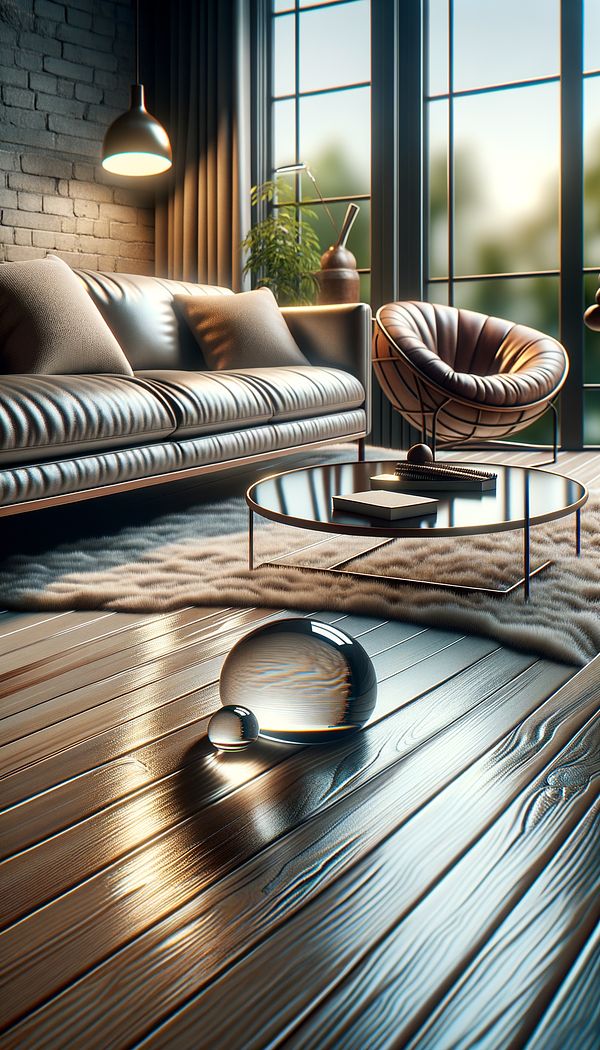What is Texture?
Texture refers to the tactile surface quality of materials or objects within an interior space.
Description
In the realm of interior design, texture goes beyond the mere physical sensation of touch. It involves the play of light, shadow, and depth that creates a visual and tactile experience within a space. Texture adds interest and depth, influencing the overall mood and atmosphere of a room. Different textures can evoke different emotions, from the warmth of a knitted throw to the sleekness of polished marble.
Textures are not only about the properties of individual materials but also about the juxtaposition and layering of different textures within a space. This layering can add complexity and richness, creating a more dynamic and engaging environment. Designers use texture strategically to guide the eye, enhance spatial awareness, and add variety without necessarily introducing new colors or patterns.
Moreover, the application of texture can greatly affect how colors and light are perceived within a space. Rough textures tend to absorb more light, softening color tones, while smooth textures reflect light, making colors appear brighter and more intense. Therefore, understanding texture is crucial for creating a balanced and harmonious interior.
Usage
Texture is applied through surface treatments like wall textures and finishings, flooring materials like carpet and hardwood, fabric choices for furniture and window treatments, and even in decorative accessories such as pillows and vases. In a modern living room, a combination of a soft, plush rug, a leather sofa, and a smooth, glossy coffee table constitutes a varied texture palette. In a bedroom, combining linen bed sheets with a chunky knit blanket and a soft velvet headboard adds layers of texture for comfort and visual appeal.
FAQs
-
How do textures influence the mood of a room?
Textures can greatly influence the mood of a room by evoking different emotions. Soft, plush textures can create a sense of warmth and comfort, while sleek, smooth textures can introduce a feeling of modernity and sophistication. The choice of texture, therefore, plays a critical role in setting the desired atmosphere in a space.
-
Can you mix different textures in one space?
Absolutely! Mixing different textures in one space is encouraged in interior design. It adds depth, interest, and dynamic contrast to a room, making it visually appealing and engaging. However, it's important to maintain balance and cohesion by considering the overall design theme.
-
How does texture affect the perception of color?
Texture affects the perception of color by influencing how light interacts with surfaces. Rough textures absorb more light, softening and muting color tones. In contrast, smooth, reflective textures can make colors appear more vibrant and intense by reflecting more light. This phenomenon makes texture a powerful tool in color management and spatial perception.
Practical Application
When incorporating texture into an interior design, consider both tactile and visual aspects. Start by identifying the mood you aim to create, and select textures that resonate with this mood. Mix and match different textures for depth and intrigue but ensure there's a cohesive element that ties them together. Pay attention to how light interacts with surfaces and plan accordingly to enhance or subdue color tones as desired. Lastly, don't be afraid to use contrasting textures to add dynamism to the space.
-
Materials & Textiles360 articles
-
Decorative Techniques322 articles
-
Textiles & Upholstery252 articles
-
Flooring & Carpets48 articles
-
Wall Treatments & Finishes157 articles
-
CrochetingCrocheting is a versatile textile art form involving the interlocking of loops of yarn, thread, or other materials using a crochet hook.
-
Artisan StyleArtisan Style refers to a design aesthetic that emphasizes handcrafted elements and materials.
-
Fan PatternedFan patterned refers to a design motif that resembles the shape and spread of a hand-held fan.
-
StickleyStickley refers to a style of furniture and a furniture manufacturing company known for its role in the American Arts and Crafts movement.
-
Spring DownSpring down is a premium cushion type that incorporates coiled springs wrapped in foam and encased within a feather-down mix or synthetic fiber, offering both comfort and support.
